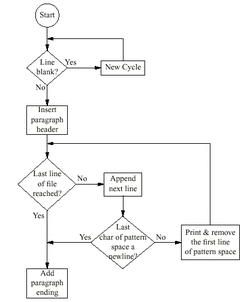 A flowchart is a type of diagram that represents an algorithm or process, showing the steps as boxes of various kinds, and their order by connecting them with arrows. Process operations are represented in these boxes. Rather, they are implied by the sequencing of operations. Flowcharts are used in analyzing, designing, documenting or managing a process or program in various fields. Flowcharts can be modeled from the perspective of different user groups (such as managers, system analysts and clerks) and that there are four general types. Document flowcharts, showing controls over a document-flow through a system Data flowcharts, showing controls over a data-flow in a system System flowcharts showing controls at a physical or resource level Program flowchart, showing the controls in a program within a system For a computer engineering, for example, he may need to draw a program flowchart before creating new software. They can also use tools like Athtek Flowchart to code which can directly convert the flowchart they designed to code. More recently Mark A. Fryman (2001) stated that there are more differences: "Decision flowcharts, logic flowcharts, systems flowcharts, product flowcharts, and process flowcharts are just a few of the different types of flowcharts that are used in business and government". In addition, many diagram techniques exist that are similar to flowcharts but carry a different name, such as UML activity diagrams.
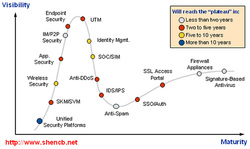
This newly-formed department made some huge strides during the Twitter Hack Week, which occurs once every quarter, where they were able to focus on proactive work. They wanted to focus on creating more automation, but anchored in the framing principles.
Justin Collins spoke about the manual security tasks of reviewing code, penetration testing and handling reports from the external world. They set out to automate all of these activities. He made a fantastic point of the workflow around static code analysis. BTW, now the efforts could be saved for we have flowchart to code. When the code changes, we have to do it all over again! Even though we’re using ‘automated tools,’ we’re still doing a lot of manual work…. So we wanted to put our robots to work. They built static code analysis into the Jenkins continuous integration process, but there was much more they wanted to do. So they set out to build SADB, the Security Automation Dashboard. SADB takes input from brakeman, phantom gang, csp, threat deck, Rosh ambo, and the outputs include emails that go to developers and infosec. So we should just wait and see whether the team will achieve success or hit the riff.

from manual -> automated
Having infosec integrated into the development and continuous integration cycle is awesome. In typical Twitter development, Brakeman runs upon each code commit, when the fix is committed, SADB will email them another email.
from low visibility -> trending/reports
What have been the results of using Brakeman? Neil Matatall then described Phantom Gang, which does dynamic application security testing. It complements Brakeman by looking for issues like mixed content, sensitive forms posting over non-HTTPS, old versions of query that often pop up when new micro sites are created, forms without authenticity token which are prone to forgery, etc.
from late discovery of issues -> auto notification
The output of Phantom Gang goes to JIRA, as opposed to directly to developers directly. Why? Often the issues are more difficult to trace to an individual developer. They eventually want to extend Phantom Gang so that they can see the effects of any SQL Injection attacks.
Twitter is a big fan of CSP. It’s great for enforcing policy and protecting web sites.
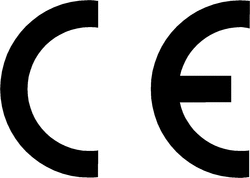
Computer engineering graduates typically have some of the highest starting salaries in engineering. They have the option of moving into hardware or software positions, or blending the two. Typical industries hiring computer engineers include financial services, computer manufacturers, chemical companies, defense contractors, consulting, transportation, manufacturing, and consumer goods. The CEs make computers more mobile and even incorporating computers into fabrics, clothes, nd systems. They improve the ability of computers build networks to transfer data, and develop ways to make computers, faster, smaller, and more capable. It’s a harsh process during the college year. Most time may be spent in a computer lab to do research and experiments, during which they develop excellent hands-on skills. They also use some tools like Athtek flowchart to code to help improve the process. Almost all CPEs understand both the hardware and the software of computers after graduates. This enables them to choose the solution that is best, not just the one they know. Sometimes the answer to making a program more efficient is a change in the computer itself. Sometimes it's cheaper and faster to change the software than the hardware. I think that why CE has always been the hottest job even when the job market is so unpromising.
 An important area within computing engineering is the development of embedded systems. Devices such as cell phones, digital audio players, digital video recorders, alarm systems, x-ray machines, and laser surgical tools all require integration of hardware and embedded software, and are all the result of computer engineering. Computer engineering majors are offered by a fairly large number of universities, almost always within engineering. This major requires significant study of mathematics. These engineers help create large server farms which are used to store huge amounts of data. However, the process is harsh. CE students study the design of digital hardware and software systems including communications systems, computers and devices that contain computers. Sometimes, they may use assisting tools. For them, programming is focused on digital devices and their interfaces with users and other devices. Computer hardware engineers typically design new computer hardware, creating blueprints of computer equipment. In addition, they test the completed models of the computer hardware they design, analyze the test results and modify the design as needed, update existing computer equipment so that it will work with new software; oversee the manufacturing process for computer hardware. Computer hardware engineers ensure that computer hardware components work together with the latest software developments.
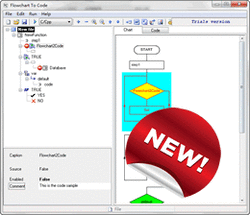 As we all know, if a computer engineer wants to create an app, generally he needs to draw a draft first, and then write corresponding codes. After that, it may take a lot of time to eliminate errors and improve the program. However, with the increasing development of computer technology, it may be a small case for even beginners to finish a program. All it need is a assisting tool Flowchart to Code. We can use AthTek Flowchart to Code to create pseudo-code and flowchart effortlessly without writing code. Below you can check the guidelines to create pseudo-code without writing code. First of all, you need to create a flowchart. There are nearly all functions you need in the tool such as FUNCTION, CODE, IF, FOR, WHILE, REPEAT, SWITCH, TRY, SET, BREAK, CONTINUE and EXIT to it. After you got the main frame of your flowchart, you can add some details. Select any node on the flowchart, you would be able to fill in some details. Now you can choose the programming language. AthTek Flowchart to Code supports multiple programming languages including C, C++, C#, Java, JavaScript and Delphi. After that, you will get your code with one click!
 Computer Engineering is really the sexiest job in today’s job market. Even when the current economy situation is not that good and number of unemployment is still increasing. It’s no denying in the information explosion world today, people can’t leave Internet. It provides both instantly updated news and access to whatever you want to know. That’s why there is still great need for computer experts. However, speaking of learning computer engineering, many people will probably flinch for the process of learning is too rigid and monotonous. But once you have make up your resolution to major at anything related to computer. You might need some tools to help you improve learning efficiency. If you are looking for an intelligent programming tool which can help you to generate the source code in seconds, you should never miss AthTek Flowchart to Code Converter. It will at least and absolutely save much time in the software engineering, and free you out of the tedious coding on keyboard. Yet you can rely too much on assisting tools, the core is your diligence and willingness to sacrifice both time and efforts. Wish you good luck!
 Flowchart to code converter perfectly integrates a flowchart designer and a source code converter. It serves as a helping tool for computer engineers and proves to be great software. Here let’s start with some of its fascinate key features A. AthTek Flowchart to Code can help software engineers to generate full pseudo-code with only one click. It makes creativity to be the only fragment required in process. In addition, it can deal with multiple programming languages including nC, C++, C#, Java, JavaScript and Delphi. If you are planning to create an application for your iPhone, iPad, Android, PC or website, we can absolutely accelerate development cycles and free software engineers from the repetitive and mechanical work. B. The flowchart and code tree can be instantly edit and show the result. After that, you may like to export flowchart to MS Word/Visio/SVG/BMP/XML. Additionally, it can also save the source code as an XML file or just an Auto Code file. What’s more, the flowchart diagrams can be easily diagramed. You can zoom in/out the view of flowchart, change the color, size, font and other settings of flowchart. C. The converter is compatible with Windows 8 If you are interested with it, you can simply download a free trial and get a fresh experience!
 Flowchart to code converter is an innovative tool developed by Athtek team to help programmers smooth their work. It is a derived version of the previous published software code to flowchart converter which enjoys good reputation. It develops the good functions of code to flowchart converter, take advice and make full use of it from consumers, and gives up the shortcomings. It is a super assistant for both senior and junior programmers. Most programming language such as C, C++, VC++ and Pascal/Delphi are supported. To give users a better experience, a free trial is available. That means you can get a free version for several days’ use length and later decide whether you would like to buy full version or not. The Team will keep on developing on it to offer better services. Here are the key features of flowchart to code converter: - Generates full pseudo-code with one click
- Supports multiple programming languages
- Programming without writing code
- Create applications for PC, iOS (iphone & iPad), Android and Web
- Editable flowchart and code tree
- Supports to reset the root of flowchart
- Exports flowchart to MS Word/Visio/SVG/BMP/XML
- Improves the utility of pseudo-code
- Custom flowchart diagrams
- One-time charge, free update and customer service
- Up to 30 days free trial
- Compatible with Windows 8
AthTek Flowchart to Code Converter is your beat assistant while programming!
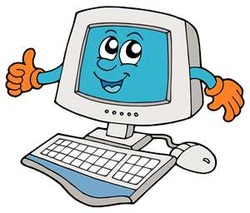 There are many tools available online to convert code to flowchart. These tools are called code to flowchart converter. It helps users to understand complex program structure by visual diagrams. The FlowChart window is synchronal with the Code Editor. Click any logical box on the flowchart, the corresponding source code will be highlighted. Now there rises a new tool to reverse the process in order to release programmers from cumbersome process. It’s called FlowChart to Code. While analyzing programming statements, loops, it build up a code according the designed flowchart .Double click on the logical boxes, the flowchart will be shrunk or expanded as your need. This is very useful in locating logical errors or extra code when user is verifying a huge amount of source code. The software supports exporting flowchart as Visio, MS Word, MS PPT (PowerPoint), and BMP (Bitmap) files. And the exported file can be edited as user’s needs. Maybe it was really like being trapped when writing a program, not to mention the lengthy code names and the function of them. The harshness begins when you finished it and started error correction. But with the combination of the two tools (FlowChart to Code and Code to Flowchart), you can save a lot of time and energy to write a good program!
|










 RSS Feed
RSS Feed